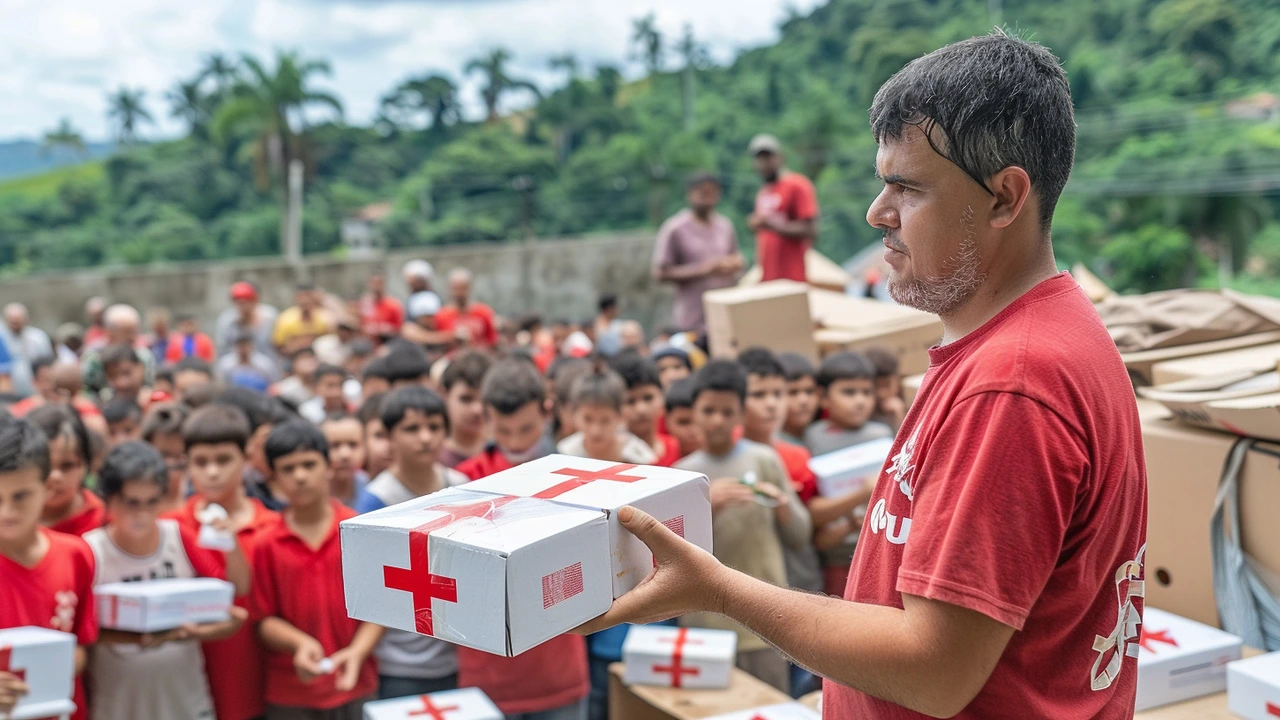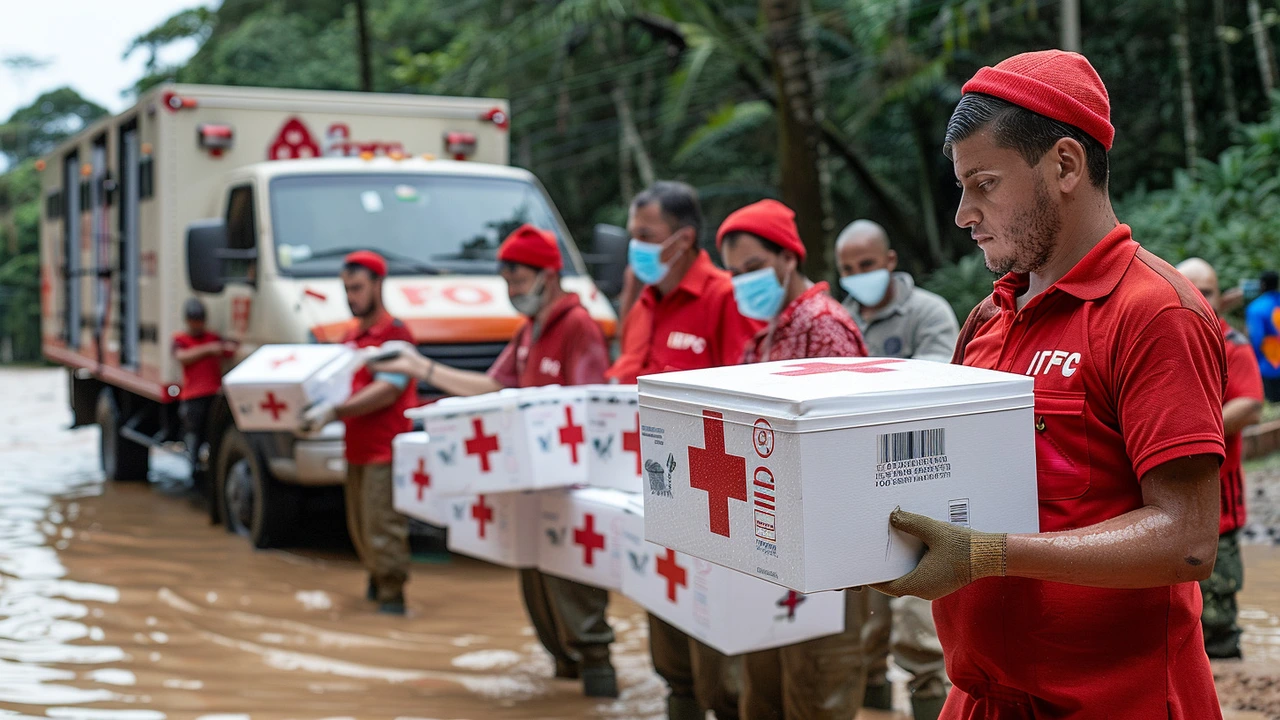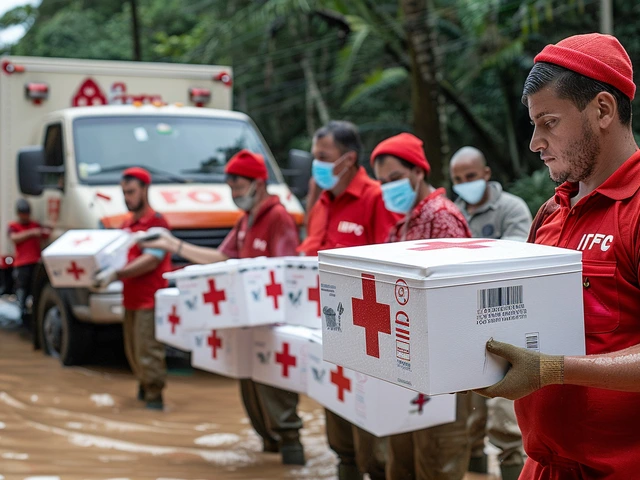Disaster Strikes Rio Grande do Sul: A Closer Look at Flood Relief Efforts
The southern Brazilian state of Rio Grande do Sul is grappling with one of the most severe flood disasters in its recent history. Torrential rains have caused widespread flooding, resulting in the displacement of 422,753 people from their homes. Of these, 16,128 individuals have been residing in temporary shelters for over a month now. The floods have upended lives and left communities struggling to cope with the aftermath.

The Humanitarian Crisis Unfolds
The scale of the humanitarian crisis in Rio Grande do Sul cannot be overstated. The floods have not only displaced hundreds of thousands of people but have also destroyed homes, infrastructure, and livelihoods. With water levels remaining high and some areas still inaccessible, the challenge of providing aid is immense. The region has seen an urgent need for basic necessities like food, clean water, medical care, and shelter. Battling against the odds, local authorities and international organizations have ramped up their efforts to deliver essential supplies and support.
Efforts by the Disaster Relief Emergency Fund (DREF)
The Disaster Relief Emergency Fund (DREF) has been at the forefront of the response efforts. DREF operations have focused on immediate relief measures, prioritizing the most vulnerable segments of the population, such as the elderly, children, and those with disabilities. Emergency units have been working round the clock to set up and maintain temporary shelters, ensuring they have adequate sanitation facilities to prevent the outbreak of diseases. Additionally, DREF has been instrumental in distributing food, water, and hygiene kits to those in need.
Challenges Faced in the Relief Efforts
Despite the valiant efforts, numerous challenges remain in addressing the needs of the displaced population. Access to remote and flooded areas is still a significant impediment, with many roads rendered impassable. This has complicated logistics and delayed the delivery of critical supplies. Health services are overstretched, and there is an urgent need for medical personnel and supplies to avert a secondary health crisis. Mental health is also a growing concern, with many flood survivors experiencing trauma and stress due to the disruption of their lives.

A Community's Resilience
Amidst the chaos and hardship, the resilience of the affected communities has been remarkable. Local volunteers have played a crucial role in supporting relief efforts, often working alongside international aid organizations. There have been numerous instances of communities coming together to help one another, sharing whatever resources they have. Such acts of solidarity underscore the strength and spirit of the people of Rio Grande do Sul.
The Road Ahead
As DREF continues its operations, there is a collective understanding that the road to recovery will be long and arduous. The focus is gradually shifting from immediate relief to longer-term rehabilitation and reconstruction. There is a need to rebuild homes, restore livelihoods, and ensure that infrastructure is resilient to future flood events. This involves not just restoring what was lost but also building back better to lessen the impact of any future disasters.
International and local bodies are working on creating more robust early warning systems and flood mitigation measures. The goal is to equip communities with the knowledge and tools they need to respond effectively to similar disasters in the future. Meanwhile, financial donations and humanitarian aid continue to pour in, reflecting a global commitment to support the people of Rio Grande do Sul in these trying times.
Status of Current Relief Efforts
As of the latest update, much progress has been made, but the relief efforts are far from over. Temporary shelters continue to operate at near capacity, and the distribution of essential goods remains a priority. Educational programs for children in shelters are being implemented to ensure that their learning is not entirely disrupted. Simultaneously, there are ongoing efforts to assess and address the long-term needs of the displaced population, including psychological support and livelihood restoration plans.

Conclusion
In conclusion, the floods in Rio Grande do Sul have created a humanitarian crisis that requires a sustained and coordinated response. The work done by DREF and other organizations is commendable, yet the scale of the disaster means there is still a long way to go. As recovery efforts continue, the focus on rebuilding stronger, resilient communities remains paramount. The determination and resilience of the affected communities, coupled with the ongoing support from various humanitarian actors, offer hope for a brighter, more secure future.






Post A Comment